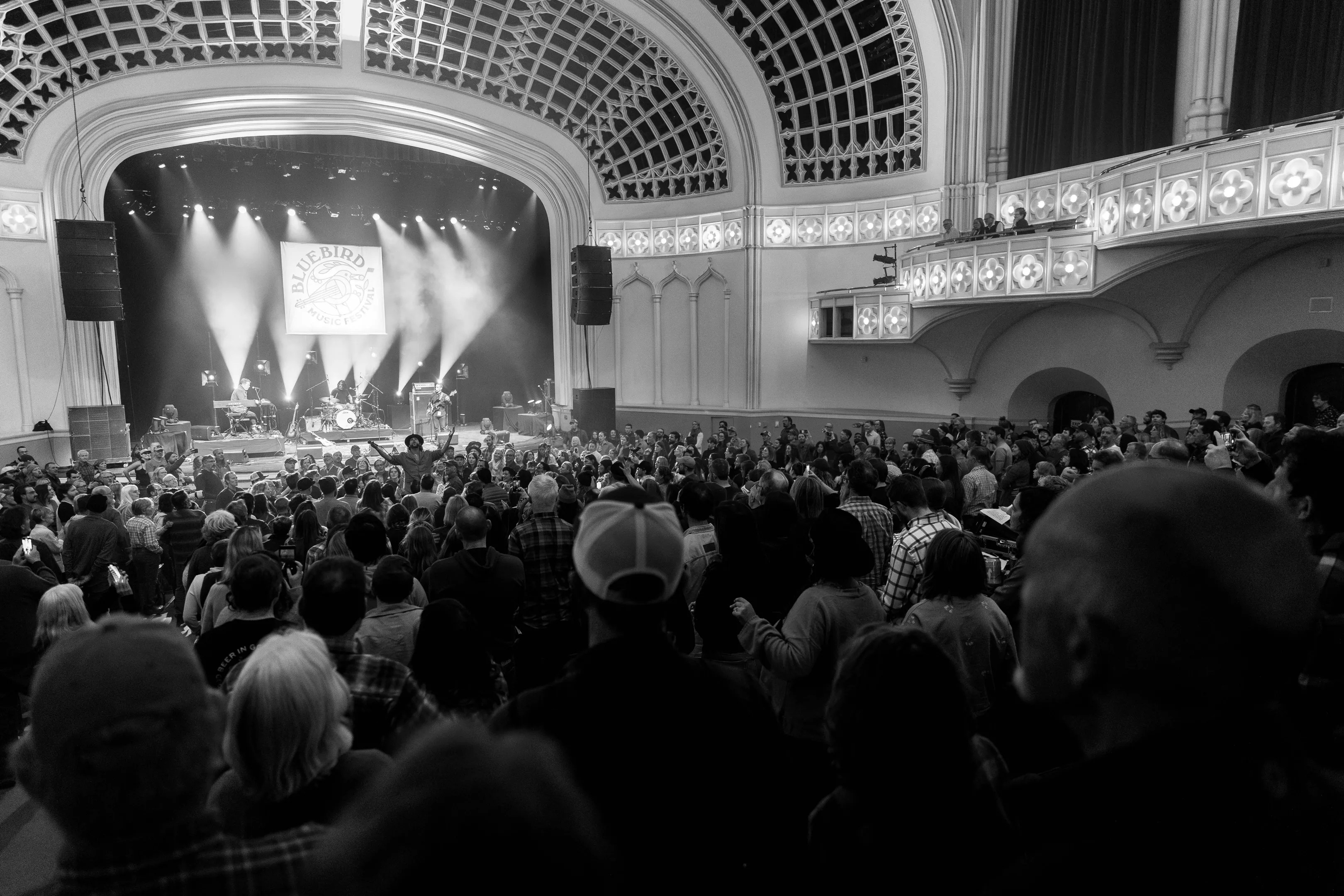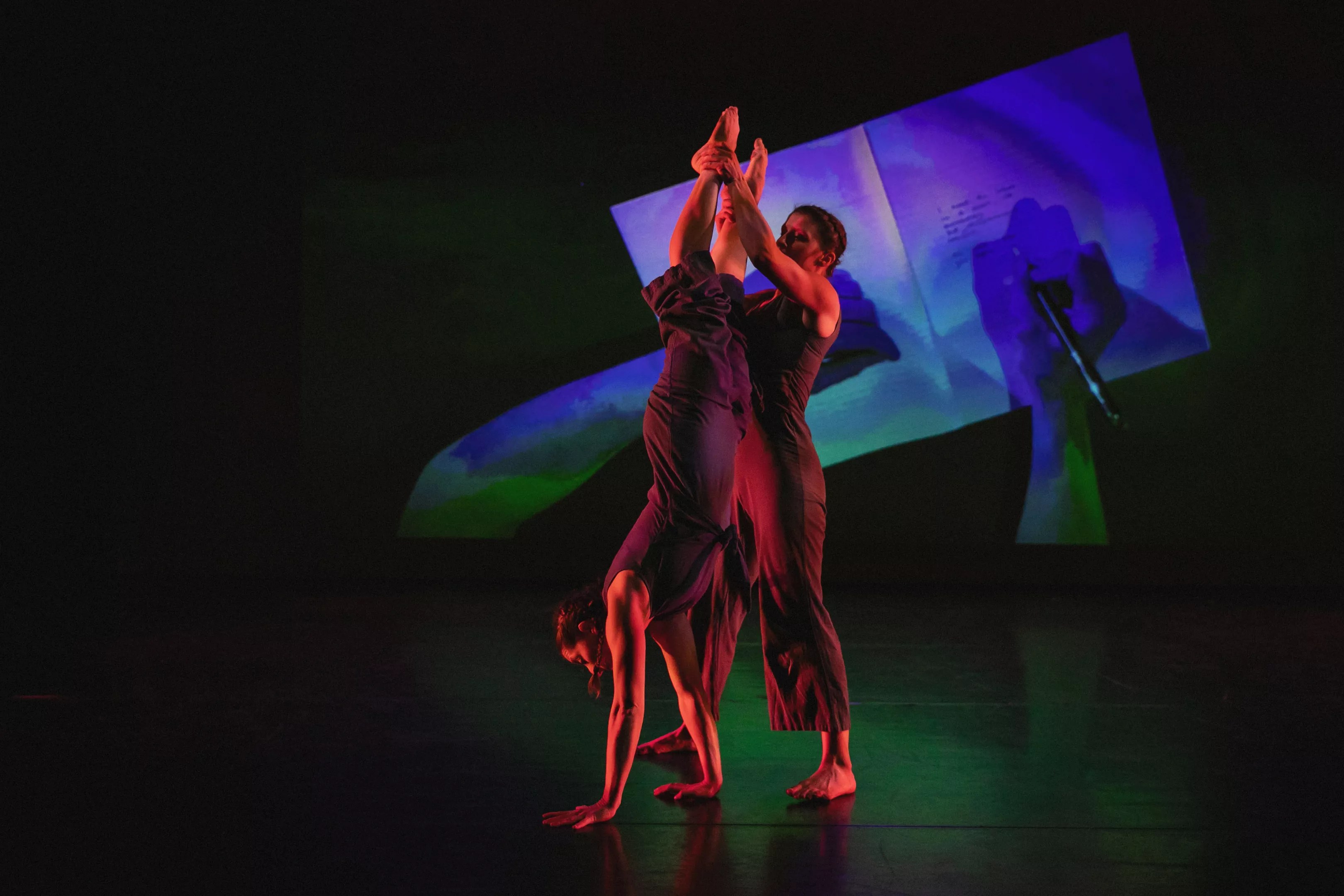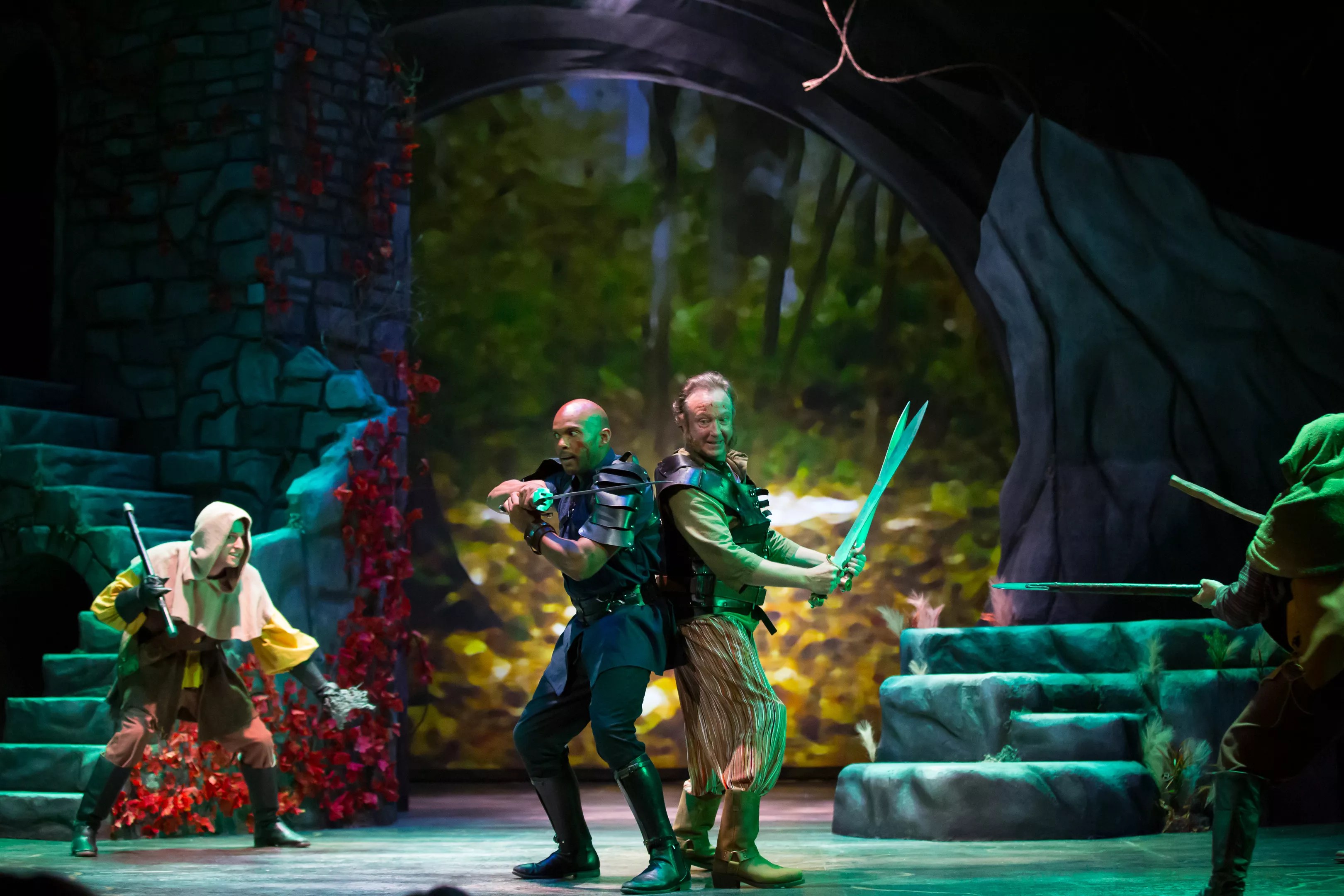
Courtesy of Lauren Hartmann

Audio By Carbonatix
As Boulder prepares to host the Sundance Film Festival in January 2027, the city faces a pivotal challenge: Can it support local creatives at the same time it becomes a global stage? The Boulder Arts Blueprint seeks to address this question, as well as long-standing concerns about funding, access and infrastructure.
“Every year our nonprofits and local artists generate $115 million of economic impact for the city,” says Deborah Malden, board chair of Create Boulder – an initiative aiming to connect Boulder’s arts and culture with public and private support – and arts liaison and advisor for the Boulder Chamber. “More than half of that is due to ancillary spending at restaurants, hotels and stores, demonstrating that the arts promote economic vitality. So yeah, Sundance will be an economic boost to our city, but let’s not ignore that our current arts ecosystem is generating significant economic impact. Let’s use the Arts Blueprint to think big about what this community needs for the future.”
Launched in late 2024 by the city’s Office of Arts and Culture, the Boulder Arts Blueprint is a two-phase planning project set to conclude in December. Its goal: to define actionable strategies and funding priorities that will support a vibrant, inclusive and sustainable arts ecosystem.
“We’re in the thick of community engagement right now,” says Lauren Click, manager of the Office of Arts and Culture, who is overseeing the Blueprint process. “Our incredible consultants – Public Sphere Projects and Progressive Urban Management Associates – are doing national benchmarking and have been gathering local feedback through surveys, focus groups and events.”
When news happens, Westword is there —
Your support strengthens our coverage.
We’re aiming to raise $50,000 by December 31, so we can continue covering what matters most to this community. If Westword matters to you, please take action and contribute today, so when news happens, our reporters can be there.

According to 82% of those who responded to the City’s online questionnaire, increasing public support should be a top priority for the next decade, similar to Sharon Dowell’s “Unfolding” sculpture in North Boulder.
Courtesy of the City of Boulder
From February 12 through March 21, the city’s online questionnaire collected 1,195 responses. According to data shared with Westword, the most significant barriers to participating in art and cultural opportunities are awareness of opportunities, cost and location/accessibility. Roughly 69 percent of the respondents attended a cultural event monthly, 41 percent took a class or made art once a week, and 28 percent volunteered with an arts organization.
More telling, 93 percent of respondents agreed that increasing support for nonprofit arts and culture organizations should be a top priority over the next ten years. Other top priorities were event support (91 percent), youth engagement (87 percent), adult cultural programming (84 percent), public art (82 percent), business and venue support (76 percent) and individual artist support (75 percent). Respondents also said that the experiences they would like to see more of in Boulder are arts festivals, live performances and public art.
“Now, we should have an executive summary out in the next couple of weeks, but this work is all just the first phase,” Click notes. “Our plan is going to now get in alignment with the City of Boulder’s Sustainability, Equity and Resilience Framework and the goals of the Boulder Valley Comprehensive Plan. I’m hoping to be visionary and think big picture, but also make sure that we’re connected to what our colleagues are doing in other parts of the city.”
But even as the city works to build broad community participation into the planning process, there’s controversy over how that Boulder Arts Blueprint process is being funded. At the center of the debate is the use of revenue from a voter-approved arts tax. In November 2023, 75 percent of Boulderites voted in support of the 2A initiative, a dedicated sales tax expected to generate roughly $3.6 million annually for arts, culture and heritage.
The ballot language promised direct support for nonprofit arts organizations, artists, venues, arts education and multicultural programming. But only about 53 percent of this year’s 2A funds, a total of $1.8 million, is being spent on community-facing programs. The rest is allocated to city staff salaries, consultants and reserves. That breakdown has sparked criticism and led to a petition, created by a coalition of arts leaders, demanding that Boulder reallocate these funds in alignment with what voters were promised.
“The Arts Blueprint is a bitter pill to swallow because it’s being paid for with 2A money,” says Marie-Juliette Bird, executive director of the New Local and drafter of the petition “to restore the 2A arts fund” created on January 21. She notes the ballot language “does not include funding for outside consultants, new city staff, reserves and setting aside money for future funding. Yet 49 percent of the 2A arts money is being spent on these line items in 2025.”
So far, the petition has collected over 2,100 signatures and $5,400 in donations; advocates are calling on Boulder City Council to make adjustments during the spring budget process to ensure the 2A fund supports artists directly.

T2 Company Dancers perform Lost & Found in Boulder’s Dairy Arts Center.
Courtesy of Jamie Kraus Photography
Click acknowledges the concerns but defends the current budget, pointing out that the arts grants budget has grown significantly – from roughly $225,000 in 2015, when the city last created a cultural plan, to $1.48 million in 2025. The arts scene also receives funds through other programs, including Boulder County’s participation in the Scientific and Cultural Facilities District and the city’s Parks and Recreation Department, which hosts its own events.
Because there are so many groups and agencies involved, Click emphasizes the need for funding strategic planning, especially as Boulder prepares to host the Sundance Film Festival. “I understand the frustration, but we cannot manage these programs without staff or a plan,” she says. “This Blueprint is about making sure we’re using funds wisely and equitably – not just for today, but for the future of Boulder’s arts ecosystem.”
Unlike the 2015 cultural plan, which focused primarily on the arts sector, the Blueprint is being developed in context with other city departments and programs. “That kind of alignment signals that the arts are not just a general add-on or afterthought – they’re integral to how we shape our community,” says Elizabeth McGuire, executive director of the Colorado Music Festival, a five-decade-old classical music series based in Boulder. “It opens the door for more community support, even from folks who may not typically see themselves as part of the arts ecosystem.”
McGuire sees the Blueprint as an opportunity to improve access for both audiences and the artists and organizations that contribute to Boulder’s cultural offerings. “There’s been a lot of emphasis on accessible programming, which is important, but we can’t talk about equity without ensuring creators are supported, respected and paid fairly for their work,” she says. “Accessibility needs to apply to both audiences and artists. The direction we’re seeing now feels more balanced.”
That theme – affordability and infrastructure – has become a common refrain. “We don’t have enough rehearsal space or venues,” Malden says. “If we are going to realize the goal of making Boulder truly an arts town, arts infrastructure is our biggest challenge. Sundance just shines a light on Boulder’s space issues.”
Malden, who sits on the Blueprint’s planning committee, is among those pushing for more transparency around budgeting and a broader use of city funding. “Let’s not play small ball,” she says. “Let’s be ambitious and use all available tools – 2A, CCRS and general fund allocations – to support the arts in a holistic way.”

Colorado Shakespeare Festival in Boulder’s 2024 production of Macbeth.
Courtesy of Jennifer Koskinen
The city’s Community, Culture, Resilience and Safety tax, a separate funding mechanism, has also come under scrutiny. While that capital improvements tax was initially pitched as a way to support cultural infrastructure when voters approved it in 2014, critics say recent allocations have provided little support for arts organizations. Of the $3.8 million of tax revenue available for nonprofits distributed in the most recent capital project funding cycle, arts organizations received $48,000 – for an upgrade to the Museum of Boulder HVAC system – and another $35,000 went to seven arts nonprofits through $5,000 Capital Investment Capacity Building grants.
Bird and other arts leaders see this as part of a larger pattern of underinvestment. “When people vote for CCRS, they are voting for culture, but they are not receiving the corresponding funding,” Bird says. “When they vote for 2A funding, they are voting to directly support arts organizations, artists and programming, not city overhead. It’s simple: what artists and arts organizations need is funding.”
That sentiment is echoed by Claudia Anata Hubiak, executive director of Boulder Ballet, who returned to Boulder after years working in larger markets.
“I’d like to see the city take pride in their anchor arts organizations,” she says. “With a proper investment, the organizations that are here can create world-class art worth putting Boulder on the map as a hub of nationally recognized excellence in the arts. Boulder Ballet is doing this … [but] the dancers who move here to join Boulder Ballet from across the country can’t even afford to live in Boulder. These artists are incredibly talented, and their presence in the community is something the city should take pride in supporting.”
Hubiak is also advocating for increased visibility. “When you visit San Francisco or New York, there are streets lined with flagpoles with beautiful banners of the opera, symphony and ballet,” she says. “I understand Boulder doesn’t want billboards and bus-stop posters, but Pearl Street, the Nobo Arts District, the Dairy, these central spaces have no visibility for showcasing the organizations that live, breathe and work here. This is a missed opportunity and one that I feel could be easily supported.”
Despite critics’ concerns, many in the arts community remain hopeful that the Blueprint will result in meaningful progress. Rita M. Rufino Valente-Quinn, producing executive director of Motus Theater, a nomadic troupe that creates original theatrical productions to facilitate community dialogue, praised the city for incorporating feedback from general operating support grantees and focusing on equity during the “bridge year” budget process.
“The City of Boulder’s approach to supporting arts and culture demonstrates a commitment to dialogue with the arts community,” Valente-Quinn says. “Moving forward, ensuring that BAC grants continue to align with community priorities while advancing equity and inclusion will be crucial in strengthening Boulder’s arts offerings.”
For many stakeholders, the Blueprint’s success will hinge not just on its vision but on its follow-through. “The last cultural plan was strong – it just wasn’t adequately funded,” Malden says. “This time, the city needs to back up its aspirations with real investment.”
Click agrees that Boulder is at a pivotal moment. “We have the potential to do big changes,” she says. “Before the Sundance Film Festival announcement, we already had an incredible arts community – but now we’re shifting to an international scale and we’ll be able to do things that we might not have been able to otherwise. I’m really invested in being sure that our arts community is at the center of that, and I will fight tooth and nail to continue to elevate local art.”
As the city prepares to release a summary of the questionnaire results, eyes across the arts community will remain focused on whether Boulder can truly live up to its self-proclaimed identity as an “arts town.”
“To call Boulder an ‘arts town’ when arts and culture are comparatively underfunded is a misnomer,” Bird says. “But we could be an arts town! And I hope we will be. With Sundance coming to Boulder in 2027, we have an opportunity to put Boulder on the map as an arts destination, year-round. Our city has the creative workforce to achieve this goal, which would boost the local economy on multiple fronts. What is needed is scaffolding, in the form of arts funding, which Boulder taxpayers consistently support through their votes.”